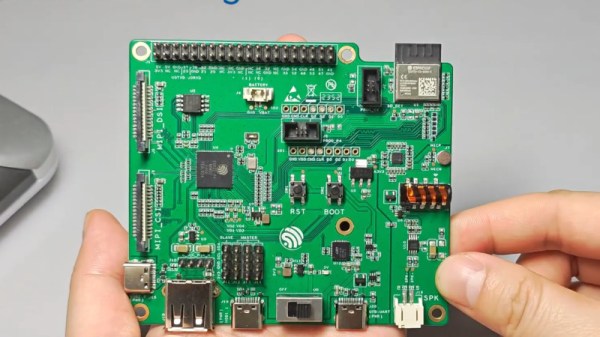If you’ve used the Espressif series of processors, perhaps you’ll have heard of their upcoming ESP32-P4. This is an application processor, with dual RISC-V cores at 400 MHz, and save for a lack of an MMU, a spec sheet much closer to the kind of silicon you’d find in single board computers with pretensions towards being a mini-PC.
It was announced a year ago and there have been limited numbers of pre-release versions of the chip available to developers, but thus far there have been very few boards featuring it. We’re excited then to note that a P4-based board we’ve been watching for a while is finally breaking cover, and what’s more, you can now pre-order one.
The Tanmatsu (Japanese for “Terminal”) is an all-in-one palmtop computer for hackers, with a QWERTY keyboard and an 800×480 DSI display. It’s designed with plenty of expansion in mind, and it’s got space on board for a LoRa radio. The reason we’re interested is that it comes from some of our friends in the world of event badges, so we’ve seen and handled real working prototypes, and we know that its makers come from a team with a proven record in manufacture and delivery of working hardware. The prototype we saw had hardware that was very close to the final version, and an operating system and software that was still under development but on track for the April release of the device. It will be fully open-source in both hardware and software.
We liked what we saw and have pre-ordered one ourselves, so we’ll be sure to bring you a closer look when it arrives.












